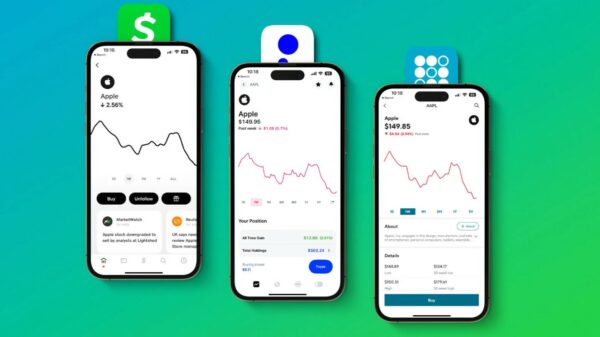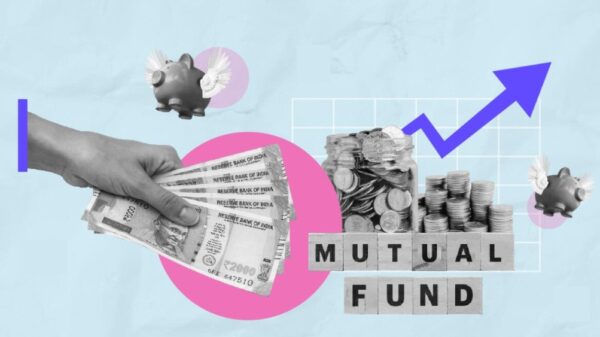Buying stocks doesn’t have to be difficult. However, you will need to do some research and get fluent in the language before making your first investment.
You will need a brokerage account to buy stocks. This can be set up in just 15 minutes. Once you have money in your account, you can then follow these steps to invest in specific companies.
Although it may seem complicated at first, buying stocks is actually quite simple. These are five steps that will help you purchase your first stock.
1. Choose an online stockbroker
An online stock broker is the best way to purchase stocks. In minutes, you can open and fund your account. You can also use a full-service broker to buy stock or directly from the company.
It’s as simple as opening a bank account online. You simply complete the application and provide proof of identity. Then, you choose to fund your account electronically or by mailing a check.
2. Find out more about the stocks that you are interested in buying
After you have set up your brokerage account and funded it, it is time to start picking stocks. You can start by looking into companies that you know through your experience as a customer.
Don’t allow the flood of data and market fluctuations to overwhelm you while you do your research. Focus on the goal: You are looking for companies in which you can become an owner.
Warren Buffett once said, “Buy into the company because you want it to be yours, not because you want the stock price to go up.”
After you have identified these companies, it is time to do some research. Begin with the annual report of the company, and specifically the annual letter from management to shareholders. This letter will provide you with a summary of the business’s activities and context for the numbers.
The majority of the information and tools you need to evaluate a business can be found on the broker’s website. This includes SEC filings and conference call transcripts. Many online brokers offer tutorials and basic seminars on how you can pick stocks.
3. How many shares should you buy?
There should be no pressure to purchase a specific number of shares or your entire portfolio. To get started, you might consider paper trading using a stock exchange simulator. You can learn to trade paper stock with play money. If you don’t have the money to invest, you can always start small.
To get an idea of what stock ownership is like, you could buy one share. This will give you a sense of how it feels and whether or not your ability to endure the tough times with little sleep loss. As you become a master of the shareholder swagger, you can increase your position over time.
Fractional stocks are a new option for stock investors. This allows you to purchase a portion of the stock instead of the entire share. This means that you can buy less stock and get more value. SoFi Interactive Investing and Robinhood are some of the brokers that offer fractional shares.
Many brokerages also offer tools that allow you to convert dollar amounts into shares. This is useful if you have $500 to invest and need to find out how many shares this amount could buy.
4. Select your stock order type
Do not be intimidated by the number of numbers and word combinations displayed on the broker’s order page. This cheat sheet contains basic stock-trading terms.
| erm | Definition |
| Ask | Buyers: The stock’s current price. |
| Bid | Sellers: The price buyers will pay for the stock. |
| Spread | The difference between the highest ask price and the lowest bid price. |
| Market order | Request to purchase or sell stock ASAP at the highest price |
| Limit order | A request to purchase or sell stock at a certain price or higher. |
| Stop or stop-loss order | Once a stock has reached a certain price, the “stop level” or “stop price”, a market order will be executed. The entire order will then be filled at the current price. |
| Stop-limit order | Once the stop price has been reached, the trade becomes a limit order. It is filled to the maximum price. |
There are many more complex order types and trading moves. Do not bother now, or ever. Successful investors have made a career buying stocks with only two types of orders: limit orders and market orders.
Orders on the market
A market order is a way to indicate that you will buy or sell stock at the current market price. A market order does not place any price parameters. Your order will be fulfilled immediately unless you are trying to purchase a million shares or attempt a takeover. If you are trying to buy a stock that is very scarcely traded and has low volume, the market order may not be fulfilled.
You shouldn’t be surprised to find that the price you pay or get if you are selling, is different from the one you were quoted. Prices for bid and ask fluctuate throughout the day. A market order is better for buying stocks that aren’t subject to large price swings. This includes large blue-chip stocks and smaller volatile stocks.
It’s good to be informed:
- For buy-and-hold investors who value consistency in price, a market order is the best option. This is because it ensures that all trades are completed.
- You can place market orders “after hours” after the markets close for the day. Your order will be placed at the current price when the exchanges reopen for trading.
- Check your broker’s trade execution disclaimer. Low-cost brokers may bundle all customer trade requests and execute them all at the prevailing price at one time, in the end, or at a particular time of the week.
Limit orders
Limit orders give you greater control over the price at which your trade is executed. If XYZ stock trades at $100 per share, and you feel that a $95 per share price is more consistent with your company’s value, your limit order instructs your broker not to execute your order until the asking price drops below this level.
A limit order is for the selling side. It tells your broker that the shares will be sold once the bid rises above the set level.
Limit orders can be used by investors to buy and sell smaller stocks. These stocks tend to have wider spreads depending on investor activity. They are also useful for investors who want to invest in periods of stock market volatility, or when order fulfillment is more important than the stock price.
You can add additional conditions to limit the order’s duration. An “all or nothing” (AON), the order will only be executed if all shares are available at the price limit. An “all or none” (AON) order will be executed at the end of the trading day. An order that is “good until canceled” (GTC), remains active until the customer pulls out or the order expires.
This can take anywhere from 60 to 120 calendar days.
It’s good to be informed:
- Limit orders guarantee the price you will get if your order is executed. However, it does not guarantee that the order can be filled completely, partially, or at all. Limit orders can only be placed after market orders have been filled. They are only valid if the stock remains within the specified parameters for the broker to execute trades.
- Limit orders may cost investors more than market orders in terms of commissions. Limit orders that are not executed in full or on a single trading day can be extended to fill the order over the next day. Transaction costs will be charged for each trade. The trade will be canceled if the stock does not reach the limit order’s expiration date.
5. Optimize your stock portfolio
We hope that your first stock purchase will be a start to a long and rewarding career of successful investing. If things get difficult, keep in mind that even Warren Buffett has been through some rough times. To stay ahead of long-term, it is important to maintain your perspective and focus on what you can control.
Market gyrations don’t belong among these things. However, there are some things you can control.
After you have mastered the stock buying process, it’s time to explore other aspects of the investment world. What role will mutual funds play in your investment story? Have you opened a brokerage account? What about a retirement account such as an IRA? Although opening a brokerage account is great for buying stocks, it’s only the first step in your investment journey.
FAQs
Which stocks are best for beginners?
Many financial advisors recommend investing in low-cost index funds. There is no “best stock”; this is why there are so many. If you are looking to add individual stocks to your portfolio, you might want to look at blue-chip stocks within the S&P500. These companies are some of the most stable in the country and have a track record of providing long-term returns to investors.
Are stocks a good investment?
It’s impossible to know when the perfect time is to invest in stocks. If you are looking to invest for the long-term (e.g., over five years), the best time to purchase stocks is as soon as money is available. You’ll still have plenty of time to recover any losses even if the stock market crashes soon after you invest. You can only guarantee that you will be part of any stock market expansion and recovery from the beginning if you invest before it starts.
How can I buy stocks online with no broker?
Online brokers make it easy for novice investors to sign up and use their services. An online brokerage account is the best way to start investing in the stock market.
If you are still interested in investing but don’t need a broker, you can look for companies offering a direct stock program. This allows you to purchase shares directly from the company without paying any fees or a low commission.
These programs often allow investors to set up regular investments and may offer the benefit of investing by the dollar instead of the share.
A dividend reinvestment program is another way to purchase stocks without the help of a broker. This allows investors to automatically reinvest dividends into the stock instead of taking the income as a dividend. You will need to search for companies offering these programs, just like direct stock plans.
What amount of money do I require to purchase stock?
You can start investing by opening a brokerage account that has no minimum account balance and zero transaction fees. This could vary depending on the company. However, it could be as low as $10. Keep in mind that not all cheap stocks are good investments.
You can even buy fractional shares from some brokerages. This means that if you have $100 to invest you could purchase a small portion of a stock such as Google. Google has traded for over $1,000 per share for a long time. The potential return on your investment over the long term is higher if you have more. To see compounding returns in action, use our investment calculator.
Are shares and stocks the same thing?
Yes, for the most part. Both owning stock and shares can be used to indicate ownership or equity in a company. You’ll often see the term “shares” used to denote ownership in a company. “Stock” can also refer to equity. Investors might say, for example, “I bought 10 shares in Apple” or “I own stock in Apple, Facebook, and Amazon.”
How many shares should you buy?
The dollar amount that you wish to invest will determine how many shares you can buy. You could buy 10 shares if the share price is $50 and your investment amount is $500. If your brokerage does not allow fractional trade, or the numbers aren’t very clear, you will have to round down. If the stock price of $51 is your investment and you only have $500, then you can only purchase nine shares. 10 shares would be $510.
What stocks are cheap to buy right now?
It is important to remember that the stock price does not tell you everything about a company. The price reflects the number of investors willing to purchase or sell stock. It does not reflect the intrinsic value of the company nor the direction that the stock price is heading.
A stock that is cheap doesn’t necessarily mean it’s a good investment.
There are ways that you can find stocks that might be undervalued. This strategy allows investors to identify proven companies whose stock prices may be lower than their stock price due to external factors such as a down market overall.
How do I know when stocks should be sold?
You should feel comfortable not touching your cash for at least five consecutive years if you are buying stocks. Stock market volatility means that it is possible for your shares to fall before they go up. If you have cash or need to sell your stock, you might consider selling them. However, you will likely pay capital gains tax on the sale and lose future gains.
What’s even more important is to know when stocks should be sold. You may feel tempted to sell stocks if the market falls. This is a bad strategy.
Once you sell, the losses you have incurred will be locked in. It is better to try to avoid volatility and focus on long-term gains, knowing that the market will rebound over time.





